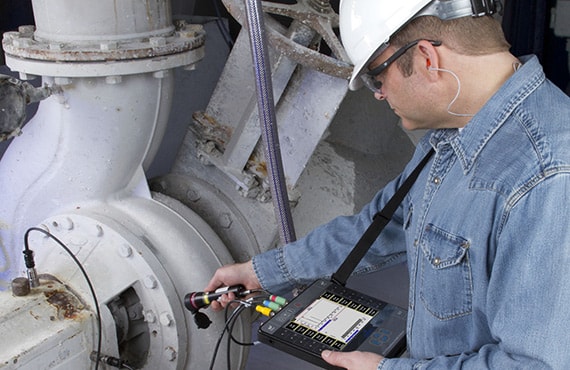IEC 60825 – Laser Product Safety Testing
The International Electrotechnical Commission (IEC) standard IEC 60825 provides essential guidelines for ensuring the safety of laser products used in various industries, including oil and gas. This comprehensive framework is designed to protect users from potential hazards such as eye injuries or skin burns due to exposure to laser radiation.
The standard covers a wide range of parameters that must be considered when evaluating the safety of laser devices. These include power density, irradiance limits, spectral power distribution (SPD), and the spatial characteristics of the beam. For oil and gas operations, where personnel may come into close contact with high-power lasers during maintenance or calibration processes, compliance with IEC 60825 is crucial.
Testing under this standard involves several key steps. Initially, a thorough analysis of the laser product’s specifications is conducted to determine its class and appropriate testing procedures. Subsequently, specific tests are performed using specialized equipment that measures various aspects such as beam divergence, spot size, and spatial profile. These measurements help identify potential risks associated with improper handling or operation.
Once the initial assessment has been completed, detailed documentation is created outlining all findings along with recommendations for safe usage. This document serves not only as evidence of compliance but also as a guide for operators to follow best practices in managing laser hazards effectively. By adhering strictly to IEC 60825 guidelines during manufacturing and subsequent use cycles, manufacturers can ensure their products meet international standards while minimizing risks to end-users.
Compliance with IEC 60825 goes beyond mere regulatory requirements; it enhances trust among stakeholders by demonstrating commitment to safety. In the context of oil & gas industries where precision and reliability are paramount, ensuring laser product safety through rigorous testing not only protects workers but also contributes positively towards overall operational efficiency.
- Reduces risk of accidents caused by improper handling or misuse
- Promotes safer working environments for personnel involved in oil & gas operations
- Enhances reputation and competitiveness within global markets
- Supports continuous improvement initiatives aimed at maintaining high standards across all aspects of business practices.
Why It Matters
The importance of IEC 60825 cannot be overstated, especially in sectors like oil & gas where the potential consequences of non-compliance could be severe. Non-conformance might lead to serious injuries or even fatalities if proper precautions are not taken during laser operations.
From a compliance officer’s perspective, ensuring adherence to these standards helps avoid costly legal liabilities and penalties that come with regulatory breaches. For R&D engineers, following IEC 60825 ensures that new designs undergo robust scrutiny before being introduced into operational environments. Proper implementation also facilitates smoother integration of advanced technologies into existing workflows without compromising safety.
In terms of procurement, selecting suppliers who meet these rigorous criteria guarantees access to quality products capable of meeting stringent performance expectations. Ultimately, compliance with IEC 60825 fosters a culture of responsibility and integrity throughout the supply chain, benefiting both buyers and sellers alike.
International Acceptance and Recognition
IEC 60825 has gained widespread acceptance across numerous countries around the world due to its rigorous approach towards laser safety. Many nations have adopted this standard as part of their national regulations or guidelines for industrial applications.
The United States, Canada, Europe, and Asia-Pacific regions are just a few examples where IEC 60825 plays an integral role in safeguarding public health and promoting responsible use of lasers. Organizations like Underwriters Laboratories (UL) and Canadian Standards Association (CSA) have incorporated elements from this standard into their own certification programs.
Compliance with IEC 60825 not only facilitates smoother international trade but also ensures that products meet the highest global standards regardless of geographical location. By adhering to these internationally recognized benchmarks, businesses demonstrate their commitment to excellence and reliability, thereby enhancing customer confidence and satisfaction.





